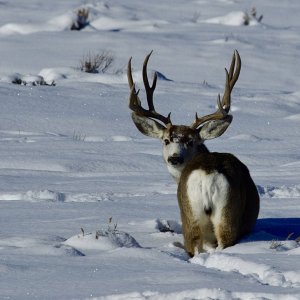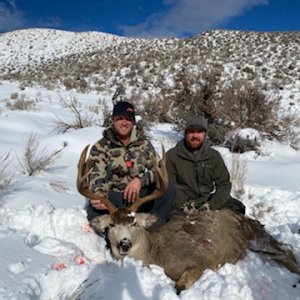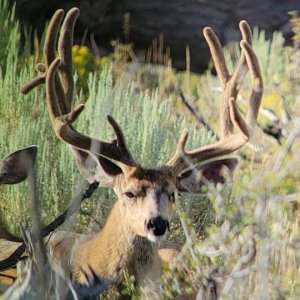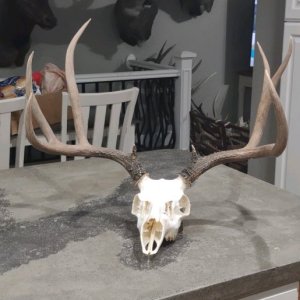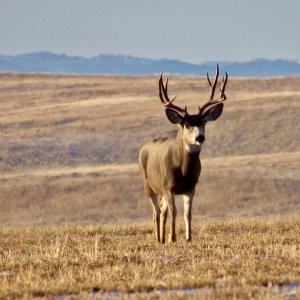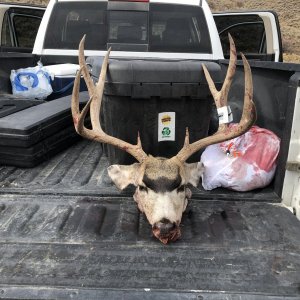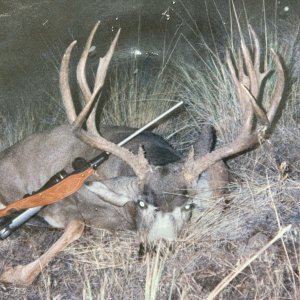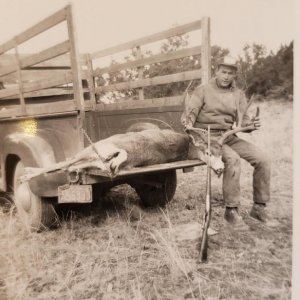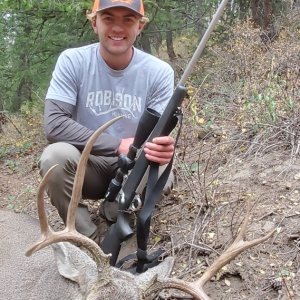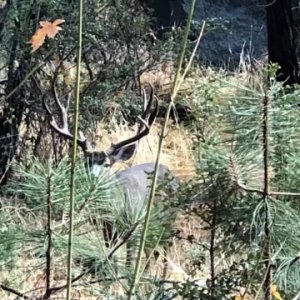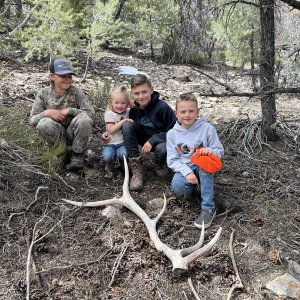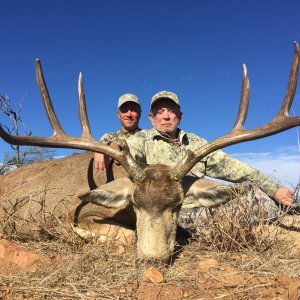LAST EDITED ON Sep-14-15 AT 07:27PM (MST)[p]
LAST EDITED ON Sep-14-15 AT 12:07?PM (MST)
Another Update!
From Lee: This update is edited from the original email for clarity and simplification of numbers. If you prefer the original, send me an email at
[email protected]
Mule deer translocation update for June 6 - September 2.
Project background/goals: See post #30.
Since the last update we have had 1 slipped collar on the Pahvant, 8 transplanted deer mortalities on the Pahvant and 3 transplanted deer mortalities on the Oak Creeks (2015 transplants). We have had a total of 13 transplanted deer mortalities this year on the San Juan (thanks Dustin).
PAHVANT:
- 1 slipped collar (2013 transplant). The necklace material appears to have failed prematurely.
- 3 unknown causes of mortality (2 from 2013 transplants, 1 from 2014 transplant). These deer had mostly been scavenged and very little was left to aid in determining the cause of death.
- 2 mortalities appear to be predation, 1 cougar, 1 coyote (2014 transplants).
- 3 mortalities were caused by vehicle collisions on I-15 and I-70 (2014 transplants).
OAK CREEKS:
- 1 mortality appears to be coyote predation (2015 transplant).
- 2 unknown causes of mortality (2015 transplants). These deer had been scavenged and very little was left to aid in determining the cause of death. Identifying causes of death is more difficult in the summer as the decomposing process moves much more quickly in the heat.
SAN JUAN:
- 10 unknown causes of mortality (2 from 2014 transplants, 8 from 2015 transplants).
- 2 mortalities appear to be predation, 1 cougar, 1 coyote (2015 transplants).
- 1 capture related mortality (2015 transplant).
Results from this year confirm the pattern found in each of the past two years where deer survival is lower than average during the initial year following release (often around 50%), but then back in line with survival rates of resident deer during year two or three post release (typically near 85% average annual survival). In the first 8 months of 2015, for example, we've confirmed mortalities for 5% of resident deer, 8% of deer transplanted to the Pahvant in 2013, 15% of deer transplanted to the Pahvant in 2014, 8% of deer transplanted to the Oak Creeks in 2014, 7% of deer transplanted to the San Juan in 2014, 32% of deer transplanted to the Oak Creeks in 2015, and 40% of the deer released on the San Juan in 2015. We suspect this pattern will continue and we will end up with about 50% survival for deer released in 2015 with 80-90% survival for resident deer and for transplanted deer in years 2-3 following release.
We also continue to observe a very strong relationship between annual survival and the estimated age of transplanted animals. Attached is a figure showing this relationship where young (2-3 years old) animals survive the initial year at nearly 3x the rate of older deer. It is also interesting to note that younger deer in their second year following release are also surviving better than older deer.
Currently, deer are spread from the north to south end of the Oak Creek Mountains and from the north end of the Pahvant to the north end of the Beaver Mountains (south of the Pahvant), with radio signals audible from both the east and west sides of each mountain range.
We have been very busy over the past several months analyzing data and drafting a thesis that will become two manuscripts for the peer-reviewed literature (one on survival of transplanted mule deer; one on movements and space use of transplanted animals from this study).
Over the next few months, we will continue to monitor radio-marked deer and complete the final report for this project which is scheduled to finish at the end of 2015. Regular (approximately monthly) updates will continue through 2015.
Thanks to all for continued interest and support. Please forward to anyone else interested and let us know if there is additional information you would like reported in our regular updates.
David Smedley and Randy Larsen (BYU)
PAROWAN TO PAHVANT TRANSPLANTED AND PAHVANT RESIDENT CONTROL DEER:
Jan'13-resident-50captured/18alive/16dead/12slipped collars/4missing
Jan'13-transplanted-51captured/12alive/30dead/5slipped collars/4missing
Mar'13-transplanted-51capture/13alive/27dead/8slipped collars/3missing
Jan'14-resident-20captured/13alive/7dead
Jan'14-transplanted-51captured/27alive/21dead/1slipped collar/2missing
Mar'14-transplanted-47captured-22alive/20dead/3slipped collar/2missing
CAUSES OF DEATH:
Jan'13-res-16dead/5cougar/6coyote/4unknown/1disease
Jan'13-trans-30dead/10cou/2coy/2bobcat/3vehicle/1poach/8unk/2capture/2dis
Mar'13-trans-27dead/7cou/5coy/3poach/8unk/2cap/2dis
Jan'14-res-7dead/2cou/1coy/2unk/2cap
Jan'14-trans-21dead/7cou/2coy/2veh/6unk/4cap
Mar'14-trans-20dead/5cou/5coy/1poach/1veeh/7unk/1cap
ANTELOPE ISLAND TO OAK CREEKS TRANPLANTED DEER:
Feb'14-transplanted-47captured/22alive/24dead/1missing
CAUSES OF DEATH:
Feb'14-trans-24dead/7cougar/6coyote/1vehicle/10unknown
ANTELOPE ISLAND TO SAN JUAN TRANSPLANTED DEER:
Feb'14-transplanted-51captured/27alive/23dead/1missing
Jan'15-transplanted-25collared/13alive/11dead/1missing
CAUSES OF DEATH:
Feb'14-trans-23dead/2cougar/4coyote/5vehicle/10unknown/2capture
Jan'15-trans-11dead/1cou/1coy/8unk/1cap
PAROWAN TO OAK CREEKS TRANSPLANTED DEER:
Mar'15-transplanted-41collared/22alive/16dead/3missing
CAUSES OF DEATH:
Mar'15-trans-16dead/3cou/1coy/2veh/5unk/4cap/1dis
Until next time,
Lee Tracy (UWC)

